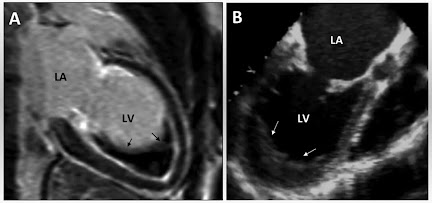Cell
Cell means small room or a chamber. Cell word was given by Robert Hook in 1663 and cell discovered also in 1663 by Robert Hook.
Definition : cell are the structural and functional unit of a living body. These are the smallest unit which contains all the features of life.
General features of cell :
1. Cell required Oxygen, nutrition for their survival.
2. Cell can produce own energy itself, which is important for their Growth, Repair, Activities.
3. Cell produce carbon dioxide and other metabolic waste products during his activities.
4. Cell shows immediate response against bacteria, viruses or toxic substances entering in the body.
5. Cell reproduced through cell division except neurons and cardiac muscle fibers.
Structure of a cell : a cell contains...
- Body
- Cell membrane
1. BODY
- Nucleus
- Cytoplasm
A. Nucleus : it is covered by a double layer membrane known as nuclear membrane.
Nucleoplasm : it is a gel like substance which is stored in nucleus.
Nucleus contain :
a. D.N.A. : gene 30000 (23 pairs of chromosomes).
b. R.N.A. :
Types of R.N.A. :
1. mR.N.A. ( messenger R.N.A.)
2. tR.N.A. (transfer R.N.A.)
3. rR.N.A. (ribosomal R.N.A.)
Nucleoli : it is present in nucleus which contains R.N.A. and some proteins.
Functions of nucleus :
1. It is the centre of all activities of cell.
2. Genes are present here which controls the cell division.
3. Genes transfer the hereditary information's of a species from one generation to another.
Nucleoplasm : it is a gel like substance which is stored in nucleus.
Nucleus contain :
a. D.N.A. : gene 30000 (23 pairs of chromosomes).
b. R.N.A. :
Types of R.N.A. :
1. mR.N.A. ( messenger R.N.A.)
2. tR.N.A. (transfer R.N.A.)
3. rR.N.A. (ribosomal R.N.A.)
Nucleoli : it is present in nucleus which contains R.N.A. and some proteins.
Functions of nucleus :
1. It is the centre of all activities of cell.
2. Genes are present here which controls the cell division.
3. Genes transfer the hereditary information's of a species from one generation to another.
B. Cytoplasm : it is the fluid which is present inside the cell. It contains...
1. Clear fluid.
2. Particles :
a. carbohydrate
b. protein
c. fats
3. cell organelles...
Types of cell organelles :
1. Membrane bounded :
a. Endoplasmic reticulum.
b. Golgi apparatus : delivers proteins molecules to different part of the cell.
c. Lysosomes : contains enzymes formed by endoplasmic reticulum.
d. Peroxisome : help in glucogenesis, intoxication of peroxide.
e. Vesicles : release secretary substances.
f. Mitochondria : power house of the cell which stores energy.
2. Not bounded by membrane :
a. Chromosome.
b. Ribosome : synthesis of protein.
c. Microfilaments : transport system of the cell.
d. Microtubules : Give strength to the cell.
Parts of cytoplasm :
a. carbohydrate
b. protein
c. fats
3. cell organelles...
Types of cell organelles :
1. Membrane bounded :
a. Endoplasmic reticulum.
b. Golgi apparatus : delivers proteins molecules to different part of the cell.
c. Lysosomes : contains enzymes formed by endoplasmic reticulum.
d. Peroxisome : help in glucogenesis, intoxication of peroxide.
e. Vesicles : release secretary substances.
f. Mitochondria : power house of the cell which stores energy.
2. Not bounded by membrane :
a. Chromosome.
b. Ribosome : synthesis of protein.
c. Microfilaments : transport system of the cell.
d. Microtubules : Give strength to the cell.
Parts of cytoplasm :
a. Ectoplasm: Peripheral part of cytoplasm, situated just beneath the cell membrane.
b. Endoplasm: Inner part of cytoplasm, interposed between the ectoplasm and the nucleus.
2. CELL MEMBRANE : it is the protective covering of the cell body. It separate ICF from ECF. It is a semipermeable membrane which help to exchange certain substances between ICF and ECF.
b. Endoplasm: Inner part of cytoplasm, interposed between the ectoplasm and the nucleus.
2. CELL MEMBRANE : it is the protective covering of the cell body. It separate ICF from ECF. It is a semipermeable membrane which help to exchange certain substances between ICF and ECF.
Thickness - 75 -111°A
Composition of cell membrane :
1. Protein - 55%
2. Lipid - 40%
3. Carbohydrate - 5%
Classification of cell membrane on the basis of presence of above substances...
1. Unit membrane.
2. Double layer membrane.
3. Triple layer membrane.
Functions of cell membrane :
1. Protection.
2. Semi permeability.
3. Absorption.
4. Excretion.
5. Exchange of gases.
6. Maintain the shape of cell.
Similar Posts :-







No comments:
Post a Comment
Please do not enter any spam link in the comment box